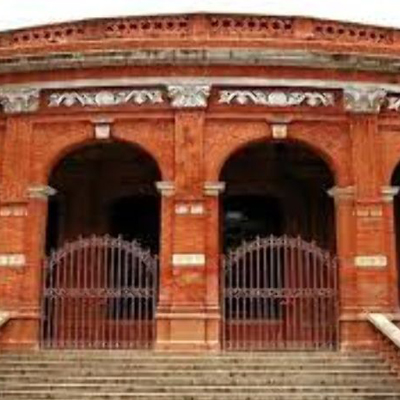Rani Mangammal Palace - Trichy - Tamilnadu

A silent monument to the unwavering spirit of a queen who reigned with courage and wisdom, the Rani Mangammal Palace lies tucked away in the heart of Tamil Nadu's Tiruchirappalli (Trichy) metropolis. Even though it is no longer as magnificent as it once was, this historical structure nonetheless echoes the heritage of the fabled Rani Mangammal and whispers tales of a bygone period. In the seventeenth century, Rani Mangammal was a well-known person as the Queen Regent of Madurai. She is renowned for her military skill and strategic acumen and is most known for her unwavering resistance to the invasion armies of Aurangzeb's Mughal Empire and the Bijapur Sultanate. Her successful defense of her realm won her the respect of both residents and historians. Constructed in the 17th century, the Rani Mangammal Palace is a popular tourist attraction in Tamil Nadu that functioned as both the queen's principal abode and the center of government for her realm. The relics of the palace, though destroyed by time and conflict, still provide a glimpse into the splendor of her rule. The current edifice has taken the place of the ancient construction, but the palace walls still exist, bearing the weight of history.
Rani Mangammal Palace’s architecture
The palace's distinctive fusion of European and Indian architectural styles demonstrates the impact of several cultures on the area at that time. The exquisite blend of Indian and European architectural styles found at Rani Mangammal Palace is a testament to the region's rich past. This palace will astonish you with its numerous statues and paintings. The palace is embellished with elaborate paintings, sculptures, and carvings that highlight the talents of the era's greatest artists. The palace walls are adorned with exquisite paintings that portray various themes from Hindu mythology. Textiles, paintings, and sculptures from the Nayak era are on display at the museum. Delicately painted ceilings, elaborate stone sculptures, and delicately carved wooden columns are a few of the most remarkable objects on exhibit. The "Gandaberunda" or "Double-Headed Eagle" insignia, which is the primary emblem of the Nayak dynasty, is a significant feature of the museum.
Rani Mangammal Palace’s special features:
The palace's interiors and walls are decorated with elaborate paintings, sculptures, and carvings that are well known. Statues portraying scenes from Hindu mythology provide visitors with a visual feast, showcasing the artistic skill of the artisans of that era. The palace's blend of artistic forms creates a mood that takes guests on a trip through time to experience the splendor and majesty of a bygone age. Early in the 20th century, the Archaeological Survey of India turned the palace into a museum after Rani Mangammal's rule. The museum is home to a wide range of Nayak period items, such as textiles, paintings, and sculptures. Detailed stone sculptures, beautifully carved wooden columns, and painted ceilings that highlight the artistry and ingenuity of ancient artisans are among the displays that are noteworthy. A one-of a kind chance to fully immerse oneself in Tamil Nadu's cultural history is to visit Rani Mangammal Palace. The exhibits in the museum help visitors understand the history, artistic culture, and legacy of the area and its rulers, such as Rani Mangammal. For individuals who are interested in history, architecture, and culture, exploring the palace and its displays can be enlightening and educational.
How to reach Rani Mangammal palace?
By Air: Trichy airport is the nearest to reach Rani Mangammal Fort, covering 10 km.
By Train: Trichy railway station is the nearest junction to reach Rani Mangammal Fort, covering 5 km.
By Road: Driving from Trichy via NH38 or NH83 is the best way to reach Rani Mangammal Fort, covering 6 km.